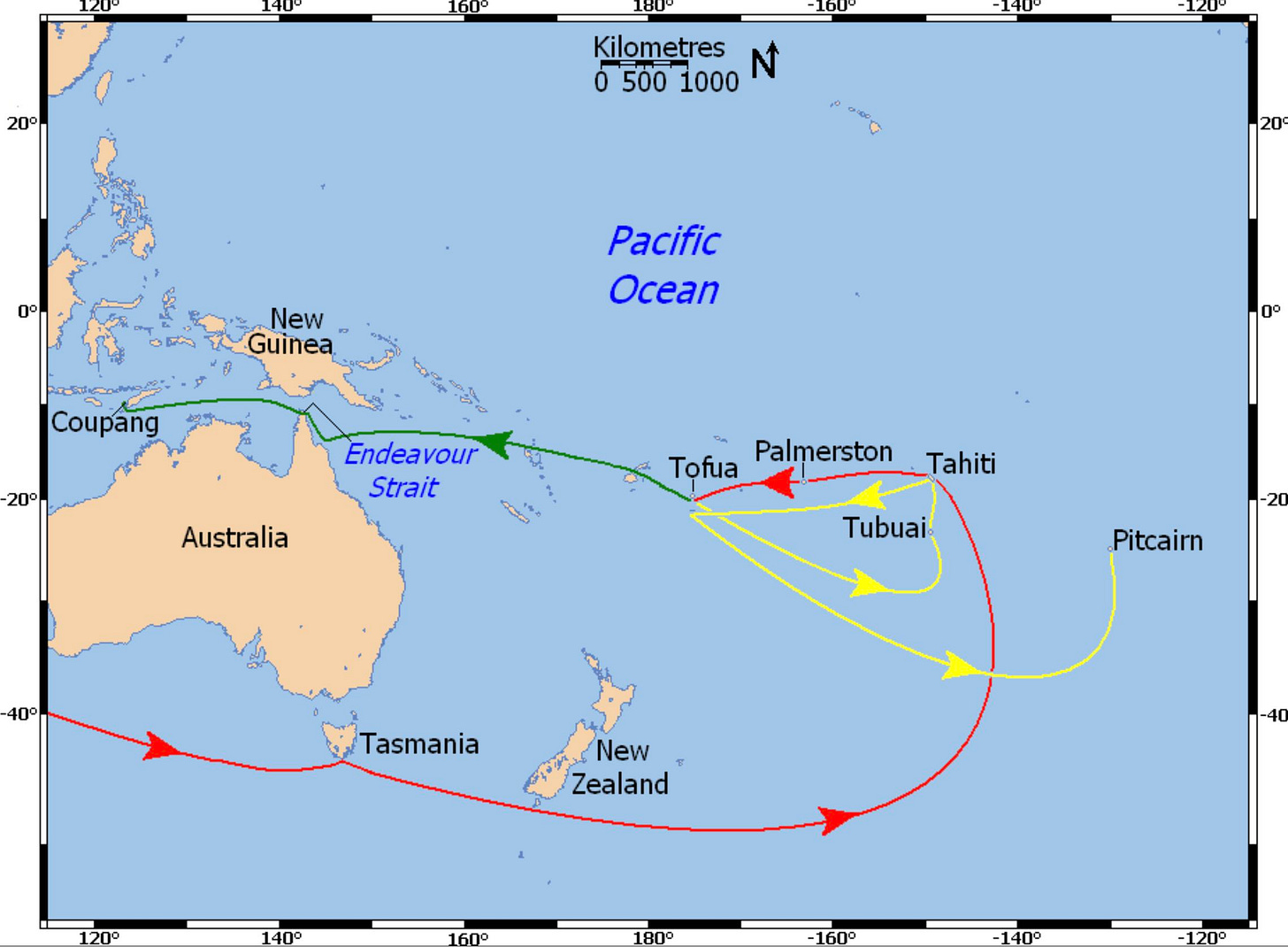The Real Mutiny on the Bounty
Not the Hollywood Version
On April 28, 1789, a group of sailors seized the ship from their captain, Lt William Bligh, in the South Pacific. Bligh and 18 loyalists were cast adrift in a small launch, which should have been a death sentence, but he navigated them over 3,600 miles to safety in Timor, using little more than a sextant and sheer will.
The late eighteenth century was a time of ferment. The American revolution was over and the nation was formed. Two days after the mutiny, George Washington was inaugurated as president of the United States. In France, the revolution was just beginning. Economic crisis, food shortages, and resentment of aristocratic privilege had pushed the country to the brink.
On May 5, Louis XVI opened the Estates-General. A month after that the Third Estate, the commoners, broke away and declared themselves the National Assembly. Two months later they issued the Declaration of the Rights of Man and of the Citizen.
The mutineers sought refuge across the Pacific. Some tried to settle on Tahiti, others disappeared to remote Pitcairn Island. For the British Navy, the Bounty mutiny was a shocking scandal. For the world, it became a legend of loyalty, betrayal, and survival — far more gripping than any movie.
When word of the mutiny arrived back in England two years later, the Royal Navy, predictably, launched a mission of investigation and retribution and returned with some of the mutineers. Three were hanged, others were acquitted or paroled.
Bligh's reputation was at first hailed as the hero but as word of his harsh leadership spread, public opinion soured. His return is still viewed as one of the great feats of navigation of the age of sail.
The mutineers scattered. Some were captured and returned to England, some tried unsuccessfully to colonize various islands, but the most successful was the head mutineer, Fletcher Christian, who took the remaining crew to Pitcairn Island, which was both remote and very difficult to find because its location on British naval charts was wrong by several hundred miles. Their English names still dominate the census.
The mutineers stripped and burned the bounty. Its ruins still lie under the waters of Bounty Bay.
Bligh's original mission had been to collect breadfruit seeds to spread further through the colonies. It failed, but his second effort as commander of two ships succeeded. He collected seedless breadfruit trees and carried them to St. Helena, St. Vincent, and Jamaica.
Photo is of the HMS Bounty reconstruction from 1962, photo by Dan Kasberger. At 120 feet, this version is 30 feet longer than the original Bounty. It sank in a hurricane in 2012. The original ship was constructed in 1784 as the merchant vessel Bethia and acquired by the Royal Navy in 1787.
Route of HMS Bounty
Labeled map of the voyages of HMS Bounty in the south Pacific: voyage prior to mutiny is red, voyage of Bounty after mutiny is yellow, voyage of Bligh and others in the longboat is green. Five labeled small islands enlarged for visibility (not to scale).
Links
History of Pitcairn Island: https://library.puc.edu/pitcairn/pitcairn/history.shtml
Story of the Mutiny (very detailed): https://en.wikipedia.org/wiki/Mutiny_on_the_Bounty
Fletcher Christian: https://en.wikipedia.org/wiki/Fletcher_Christian
Thanks for reading
John Pearce
Washington, DC





This story never stops to amaze from so many levels. Also, I never thought to connect it with time with the events in France. The fear of the mutineers (for being hanged) must have been tremendous, and so was their courage - from what I know, a mutiny of that scale rarely happened on British vessels, even though the conditions were just cruel, from today's standpoint. After the mutiny, having such a formidable ship the mutineers could have sailed anywhere worldwide, sell the ship to Britain's enemies, become rich and disappear forever - rather than go to the nearest tiny island and burn the ship. If they didn't, that may be due to lack of navigation skills and different perspective of the simple boys who were part of the mutiny. Another amazing part of the story is Blight's journey to safety. Thanks for retelling the story.